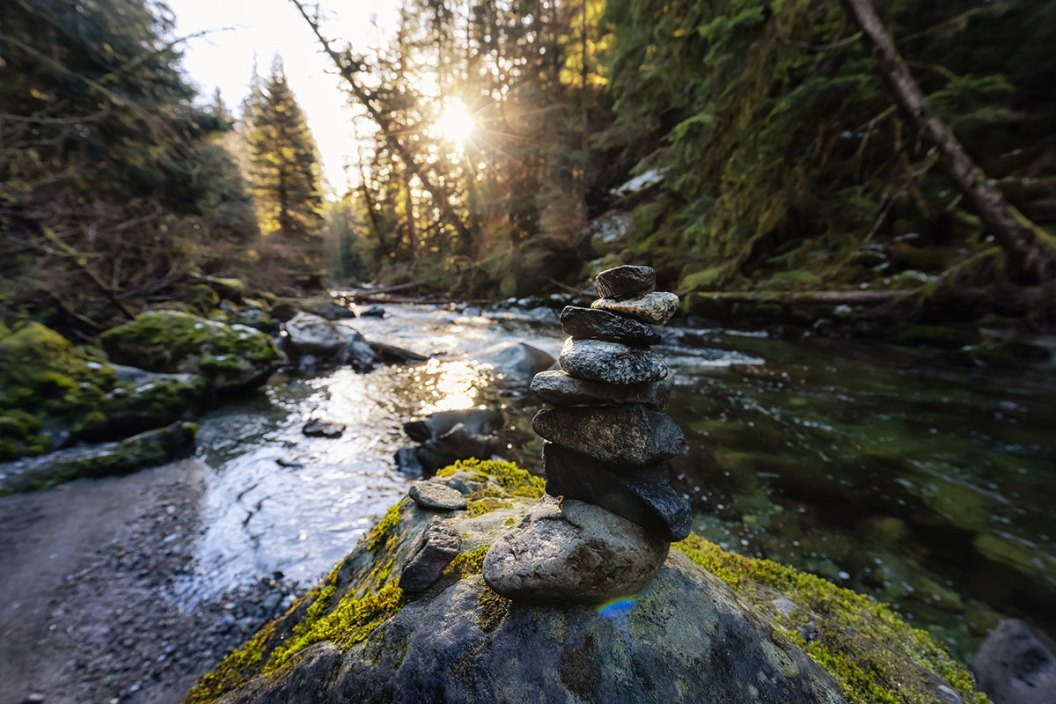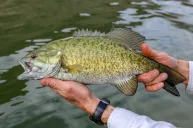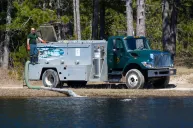Rock stacking might appear to be a harmless and fun outdoor activity, but it's still detrimental to fragile riparian ecosystems.
While I was attending a small festival outside of town one summer, a heat wave struck that sent dozens of campers scrambling into a nearby creek to go for a dip and cool off in the shade and serenity of a trickling stream.
It became the hub for campers that day; some threw sticks for their dogs, some wandered up and down the creek picking berries, and some creatively stacked rocks into "cairns," Gaelic for "heap of stones."
As I observed these rock stacks, I noticed that they were formed directly in front of a marker for a salmon stream survey.
These temporary natural installations may be an expression of patience and balance to the ego of the builder, but to some naturalists who practice "Leave No Trace" ethics, to stack rocks is often seen as nothing more than evidence left behind that the environment was disturbed by a human intrusion, natural graffiti, and vandalism of habitat.
These disturbances and geological games of Jenga leave behind more than just footprints, and can be potentially damaging to the life cycles of organisms connected to the a natural area's river rock.
Beyond the visual disturbance of natural environments, each rock in a stream is blooming with life. Everything from aquatic plants to micro-organisms are attached to those rocks. They also create habitat for crustaceans and nymphs.
Crevices in the rocks hold eggs in salmon redds to be fertilized, supporting those eggs until they grow into fry and begin feeding off the very critters that were hatching off of and crawling around those same rocks.
You could be lifting the roof off the home of a crawfish, or disturbing the cradle for the future generations of already dwindling salmon runs. Removing rocks from fragile stream habitats is essentially the equivalent to removing bricks from someone else's home while raiding their refrigerator and food pantry.
The mentality that stacks of stones "won't hurt anything" takes away from the fact this growing trend has become a problem for national parks where millions of visitors frequent each year. The Ozark National Scenic Riverways receive 1.3 million visitors annually, many of which will disturb streams in a number of ways, prompting a public announcement about the practice of building cairns:
In most United States national parks, moving or dislodging rocks is against the rules and rangers are encouraged to knock rock piles down.
Columbia River Fisheries Sampler Kevin Gray has almost a decade-long experience in stream surveying, spawning ground analysis and fish passage. Beyond disturbing whatever might be under individual rocks, some visitors that move enough rocks create obstacles to fish passage.
"Obviously moving rock from the river has some direct impact. A few possible things that come to mind are: disturbing spawning salmonid spawning habitats/fry that haven't emerged yet; macroinvertebrates being scoured out; possibly even altering the course/flow of the stream if enough rocks are moved."
The practice of rock stacking has ballooned in popularity over the past decade. What may have started as a harmless summer activity has grown to be on par with the adverse effects left behind in dredge mining, creating disturbances in the substrate that encourage erosion and restructuring of the river bottom in a harmful manner.
Mark Nale of the Centre Daily Times also quoted Ben Lorson, fish passage biologist for the Pennsylvania Fish and Boat Commission's Habitat Division, on the details of stacking stones and the negative ecological effects.
"A stream's bottom, the substrate, has its own micro-habitats," Lorson explained. "The substrate provides the base of the aquatic food chain, from algae to macro-invertebrates all the way up to game fish. The surfaces of the rocks and the cracks and crevices between them are very important as habitat.
"Because of my job, I usually think of moving stream rocks with respect to building dams, but any large-scale or repeated disturbance of the stream substrate, including stone-stacking, would have a significant impact on the food chain."
Ben Stone, Ricketts Glen State Park manager also commented on cairn building.
"Two years ago, when I discovered about 100 stone piles in just one place, it really drove the point home to me," he said. "We have 400,000 to a half-million visitors in our park each year. It isn't just one person's impact. What if every person just moved one rock? What would the [environmental and visual] impact be if thousands of rocks were moved? It is an education issue, some people just don't think it through."
Most people are simply unaware that their actions are disturbing the natural environment. Or maybe their intending to mark trails or create a little harmless rock art.
However, many who are fully aware of the ecological impact of rock cairns simply shrug it off as a lower priority in an environment that faces multiple challenges, many of them created by other humans.
There is merit to everyone doing some part to heal wounds to fragile American riparian ecosystems that are already enduring a slow death by a thousand cuts. The issue of stone sculptures in wild spaces is a balancing act that can't afford to topple.
NEXT: WHEN THINGS DON'T GO AS PLANNED, IT'S BEST TO JUST LAUGH AND SMILE
WATCH




